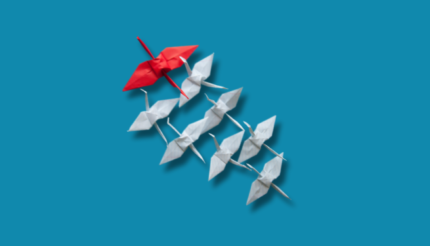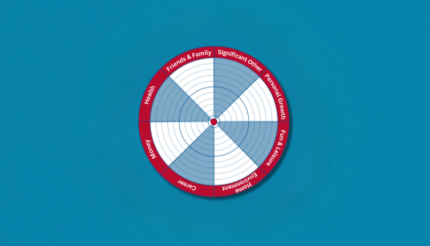Understanding human behaviour is a vital part of managing relationships. Knowing how you get along with others makes it easier to communicate and connect with people on a personal or business level. First you need to understand your own communication style and behaviour.
Today we are going to learn about the DISC profile tool, a system that divides human behaviour into four categories:
- Dominance
- Influence
- Steadiness
- Compliance
We each have all four components within us, but one usually manifests itself more strongly than the others. Each category behaves and communicates differently – indeed buys differently – and each requires a specific approach to work with them.
1. High Dominance

People in this category like to be the best in what they do. They’re doers who want to know it all and enjoy trying new things and keeping up with (or even anticipating) trends.
You’ll recognise high dominant characters by their optimistic approach to start multiple projects. But they often fail to complete them. They’re great visionaries and often are the ones to initiate ideas. Every team needs a high dominant (a starter) who wants to be first and get things off the ground.
2. High Influence

The influencer is a ‘people person’, always open to communicate with others. They tend to have a large social media presence, and many people look to Influencers for guidance. They’re the life and soul of the party, holding the team together and feeling proud of their relationships.
You need people from this category in your team to keep members together and encourage communication.
3. High Steadiness

People with high steadiness tend to dislike change and so often stick to the same routine. They’re people-oriented but focus on maintaining their relationships in a certain way. They love doing routine jobs, which makes them great in critical positions within your company.
Their strong point can also become a weakness, as it can be hard for them to develop a new strategy or adopt new technology. The good news is you can always rely on them to get the job done.
4. High Compliance

If you have team members in this category, you know they’ve read the entire instruction manual and will make sure everything is correct before a presentation. They love checklists and might ask a few extra questions to make sure they know all the details before starting a new project.
They’re less people-oriented, more likely to spend their time by themselves reading or mapping processes than talking to people or coming up with innovative ideas.
Knowing these categories make it easy for people to understand each other and communicate better. People tend to get along well when they understand other people’s behavioural patterns; it makes communication and working together more straightforward, bringing excellent results for the organisation.
Why should you care about DISC?
Knowing the type of people in your team makes it easier to place them in appropriate positions in your organisation. A team needs people from all four categories to progress, and key roles should match the characters that are more likely to thrive in those positions.
Here are some guidelines that can help:
- Dominant and Influential people are good communicators and do well in leadership and sales.
- Steady and Compliant people are more reserved; they work best in detail-oriented positions, such as bookkeeping, or in other back office roles.
- People who are Influential and Steady are people-oriented and do well in positions that require human interaction.
- Dominant and Compliant people are task-oriented. They maybe aren’t as good with people, but they know how to get the job done. You can rest assure they’ll do their best to deliver excellence.
Understanding these people helps you to communicate, lead, and manage your team better. It also teaches you how to create messages that cut through the noise and reach the right audience at the right time.
How to Recognise DISC Categories
Once you understand what differentiates each category, you can observe team members and see how they work. You’ll begin to identify patterns from the way they approach a task.
Let’s say that you plan to move your office. Here’s what you can expect:
- A ‘dominant’ team member will be ready to give instructions, appoint tasks for everyone, and even arrange transportation. They’re focused and direct – potentially even a bit loud – and they always get straight to the point. They’ll send you a one-line email if that’s all they need to get the job done.
- An ’influential’ person will plan an entire weekend around the office move and invite everyone for dinner and drinks afterwards. They like to be friends with everyone and be everyone’s best friend. You might even get text messages from them that ask about personal stuff, but rest assured they’re genuinely concerned about you. You can also easily recognise them by their active social media presence.
- A ’steady’ personality will take time to ensure that everything is removed and replaced in the same position as it was before. They’re calm, will get on with things in the background, and are often interested in how other people feel about their decisions.
- A ‘compliant’ employee plans every detail of the move, perhaps even does surveys about the task and research about the moving company to make sure they have made the best choices. They’re detail-oriented, sometimes to the point of being annoying, and communicating with them may take longer than expected.
Before getting to know more about the people around you, the trick is to start by knowing about yourself. Once you learn your own profile, it’s easier to analyse other people, communicate better, and enables your team to be successful.
A Word on Using the DISC System
Please note that the DISC system is not designed for people to defend or justify certain types of behaviour. It should be used to build better relationships and interactions with other people, not to manipulate them in any way.
It’s important to understand why someone does something the way they do, and you’ll probably find that you are no longer annoyed about certain behaviours when you can see the pattern behind them. You avoid overwhelming others with ineffective communication and are able to build a better work environment for everybody.
What’s Next?
Pick five people you often interact with and try to analyse their behaviour. Observe the way they work and communicate to identify what category they belong to. That way, you will be able to communicate better with them and consolidate your relationships.
If you want to identify your category, I’m here to help you find out what DISC profile best represents your personality. Get in touch to get your DISC profile or even a communication workshop for your team to help them understand their own and their colleagues personality style and communication preferences.





